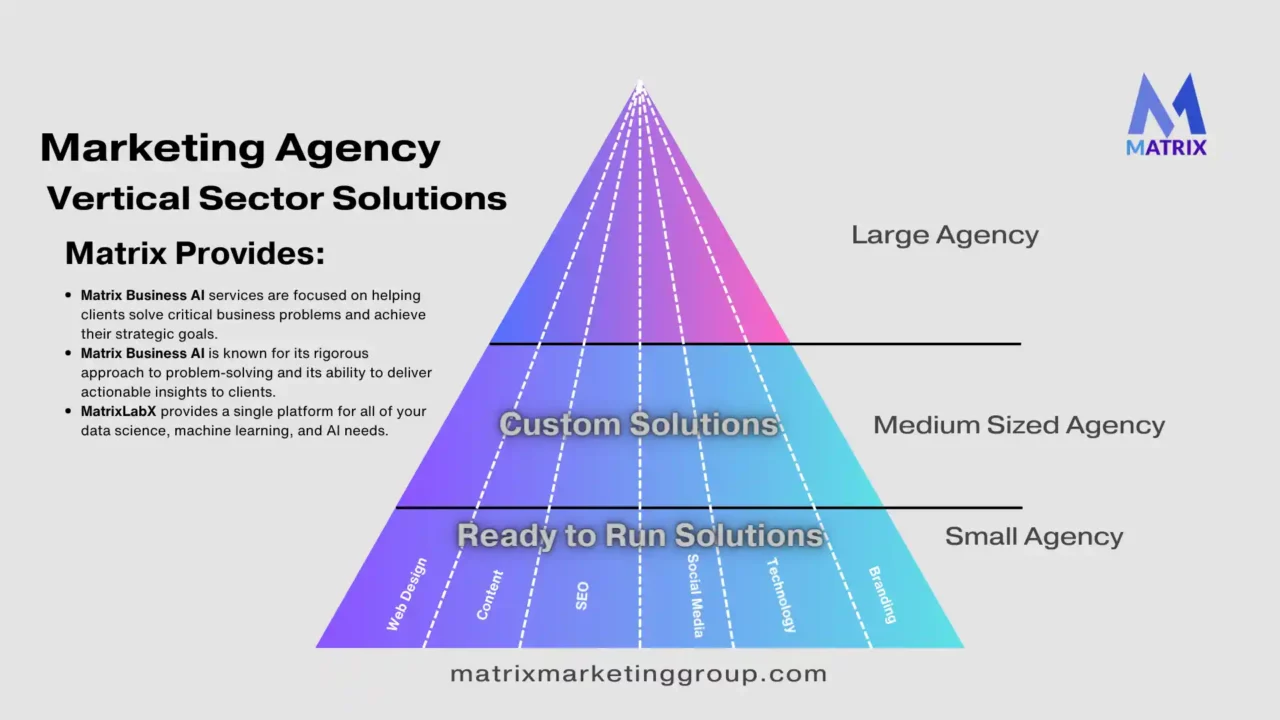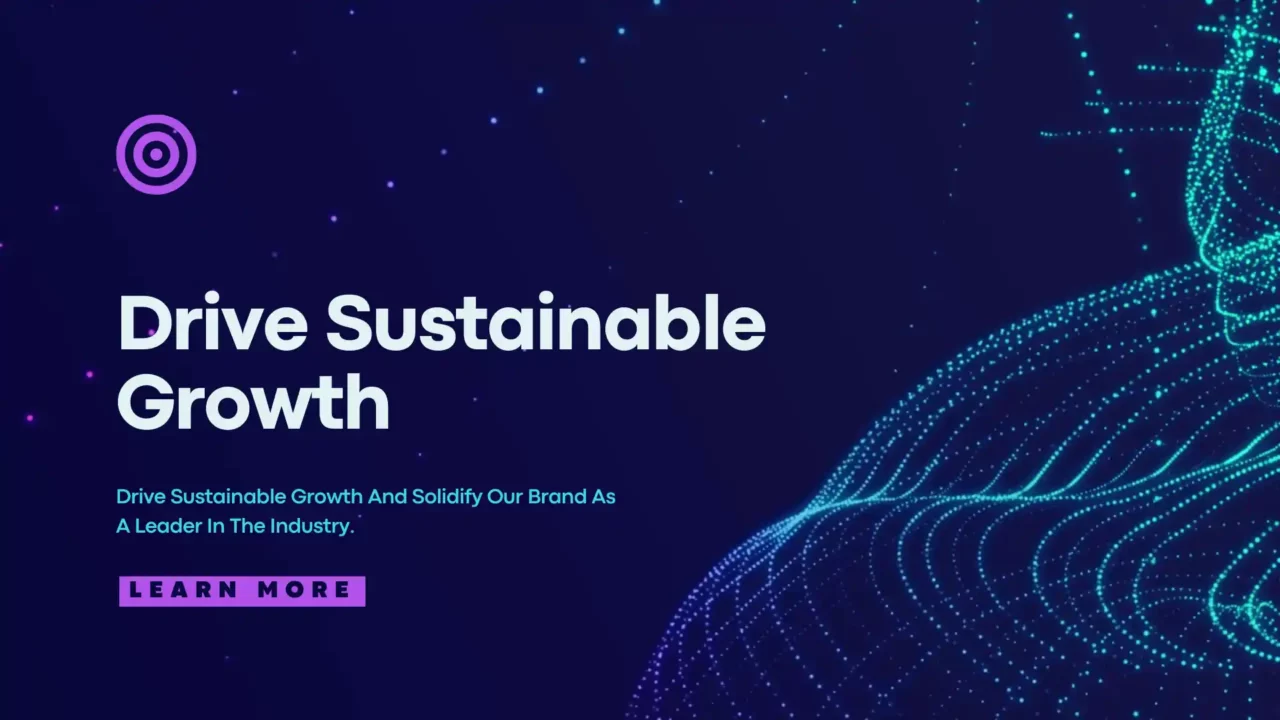Drive sustainable growth and solidify our brand as a leader in the industry.
Learn how to drive sustainable growth and solidify our brand as a leader in the industry.
2024: A Year of Innovation and Growth
To drive sustainable growth and solidify our brand as a leader in the industry.
To achieve this, here are key tasks and goals:
Enhance customer experience (CX):
Elevate the customer journey across all touchpoints, fostering loyalty and advocacy. This involves implementing a data-driven approach to personalize interactions, predict needs, and anticipate issues.
Enhancing Customer Experience with AI: A Chief Marketing Officer’s Guide

In today’s competitive landscape, a seamless and exceptional customer experience (CX) is no longer a luxury, but a necessity. Enter AI, a transformative technology that can empower marketers to personalize interactions, anticipate needs, and deliver remarkable experiences that foster loyalty and advocacy.
As a Chief Marketing Officer, here are some key strategies to leverage AI for enhanced CX:
1. Powering Personalized Journeys:
- AI-driven recommendation engines: Suggest relevant products, services, and content based on individual customer preferences and purchase history. This fosters customer satisfaction and increases conversion rates.
- Dynamic website personalization: Tailor website content and offers to individual visitors based on their demographics, interests, and online behavior. This creates a more engaging and relevant experience.
- Smart chatbots and virtual assistants: Offer 24/7 customer support, answer frequently asked questions, and resolve issues efficiently. This frees up human agents for complex inquiries and enhances overall customer satisfaction.
2. Anticipating Customer Needs:
- Predictive analytics: Analyze customer data to predict future behavior, identify potential issues, and proactively offer support or recommendations. This reduces customer frustration and improves loyalty.
- Sentiment analysis: Monitor online conversations and brand mentions to understand customer sentiment and identify areas for improvement. This enables proactive problem-solving and fosters positive brand perception.
- AI-powered chatbots: Analyze past interactions and customer data to predict customer needs and personalize responses. This creates a more natural and engaging conversation experience.
3. Delivering Seamless Omnichannel Experiences:
- Unified customer profiles: Integrate data from various touchpoints (website, email, social media, etc.) to create a holistic view of each customer. This enables consistent and personalized communication across all channels.
- Cross-channel campaign management: Orchestrate marketing campaigns across multiple channels, ensuring seamless transition and delivering a unified brand message.
- AI-powered real-time marketing: Personalize marketing messages and offers based on customer behavior across different channels in real-time. This increases engagement and conversion rates.
4. Building Strong Customer Relationships:
- AI-powered customer segmentation: Group customers into relevant segments based on shared characteristics and behavior. This enables targeted communication and personalized engagement strategies.
- Automated loyalty programs: Reward customer loyalty with personalized incentives and experiences. This fosters stronger relationships and encourages repeat business.
- AI-driven social listening: Monitor brand mentions on social media and proactively address customer concerns and feedback. This demonstrates responsiveness and builds trust.
5. Measuring and Optimizing CX:
- AI-powered customer feedback analysis: Analyze customer feedback from various sources to identify trends and areas for improvement. This enables data-driven decision-making and continuous CX optimization.
- Predictive churn models: Identify customers at risk of churn and proactively offer solutions to retain them. This minimizes customer loss and revenue impact.
- Experimentation and A/B testing: Utilize AI to test different CX strategies and measure their impact. This ensures ongoing improvement and optimization of the customer journey.
By effectively utilizing AI, marketers can gain valuable insights into customer behavior, personalize interactions, and deliver seamless experiences across all touchpoints. This results in increased customer satisfaction, loyalty, advocacy, and ultimately, business growth. However, it’s crucial to implement AI ethically and transparently, ensuring data privacy and building trust with customers.
As Chief Marketing Officer, I am committed to leveraging AI responsibly and strategically to revolutionize our customer experience and achieve sustainable success. By focusing on personalization, anticipation, omnichannel consistency, strong relationships, and continuous optimization, we can create remarkable customer journeys that drive long-term value and loyalty.
Optimize marketing channels:
Analyze and refine our marketing mix, focusing on channels that deliver the highest ROI. This includes leveraging new technologies like marketing automation and AI to effectively optimize campaigns and target audiences.
Optimizing Marketing Channels with AI: A Chief Marketing Officer’s Perspective

In today’s dynamic marketing landscape, data-driven decisions are crucial for success. Artificial intelligence (AI) has emerged as a powerful tool, enabling CMOs to optimize marketing channels and achieve remarkable results. From customer targeting to campaign performance, AI is revolutionizing the way we reach and engage our audiences.
Here are some key areas where AI can optimize marketing channels:
1. Audience Targeting:
- AI-powered audience segmentation: AI algorithms can analyze vast amounts of customer data to identify patterns and create hyper-relevant audience segments. This allows us to deliver personalized messages and offers that resonate with specific customer needs and preferences.
- Predictive modeling: AI can predict customer behavior and identify potential high-value customers. This enables us to focus our marketing efforts on the most promising leads, maximizing ROI.
- Real-time personalization: AI can dynamically adjust content and messaging based on individual customer profiles and behavior. This creates a truly personalized experience that fosters deeper engagement and loyalty.
2. Channel Optimization:
- AI-driven channel selection: AI can analyze historical data and current market trends to recommend the most effective channels for reaching our target audience. This helps us allocate resources efficiently and avoid wasting money on underperforming channels.
- Dynamic budgeting: AI can continuously monitor campaign performance and automatically adjust budgets in real-time to optimize ROI. This eliminates the need for manual intervention and ensures we’re getting the most out of our marketing spend.
- Automated campaign management: AI can automate repetitive tasks such as ad bidding, ad copy generation, and campaign scheduling. This frees up valuable time for marketing teams to focus on strategic initiatives.
3. Content Optimization:
- AI-powered content creation: AI can generate personalized content, such as blog posts, social media updates, and email newsletters. This allows us to create content that is relevant and engaging for specific customer segments.
- Predictive content performance: AI can predict how well specific content will perform before it is published. This helps us prioritize the content that is most likely to generate leads and conversions.
- Dynamic content optimization: AI can continuously monitor content performance and identify areas for improvement. This enables us to adjust content in real-time to maximize engagement and impact.
4. Analytics and Reporting:
- AI-powered data analysis: AI can analyze vast amounts of marketing data to identify trends, patterns, and insights that would be difficult for humans to discern. This allows us to make better-informed decisions about our marketing strategy.
- Real-time reporting: AI can provide real-time insights into campaign performance, allowing us to react quickly to changes in the market and adjust our strategies accordingly.
- Predictive analytics: AI can predict future outcomes based on historical data and current trends. This enables us to anticipate potential challenges and opportunities and proactively adjust our marketing strategy.
Examples of AI-powered marketing tools:
- Marketing automation platforms: HubSpot, Marketo, Pardot
- Social media management tools: Sprout Social, Hootsuite, Buffer
- Content marketing platforms: Contently, AIContentPad
- Advertising platforms: Google Ads, Facebook Ads, Twitter Ads, AIAdPad
- CRM platforms: Salesforce, Microsoft Dynamics 365, Google Marketing Platform
Challenges and considerations:
- Data quality: AI algorithms rely on high-quality data to generate accurate results. It’s crucial to invest in data collection, cleaning, and organization.
- Ethical considerations: AI should be used responsibly and ethically. It’s important to be transparent about how AI is being used and to ensure that it is not used to discriminate against individuals.
- Human oversight: AI is powerful, but it should not replace human decision-making. CMOs should retain control over their marketing strategy and ensure that AI is used to augment, not replace, human expertise.
AI is rapidly transforming the marketing landscape, and CMOs who embrace this technology will have a significant advantage. By using AI to optimize marketing channels, CMOs can achieve a deeper understanding of their customers, deliver more personalized experiences, and ultimately drive higher ROI. While challenges exist, the potential benefits of AI are vast, making it an essential tool for CMOs who want to stay ahead of the curve.
Embrace agility and experimentation:
Foster a culture of innovation within the marketing team, encouraging experimentation and rapid iteration to ensure we stay ahead of the curve and adapt to evolving market trends.
Embrace Agility and Experimentation with AI: A Marketing Imperative
Embracing agility and experimentation with AI is no longer an option, but a necessity for any organization seeking to thrive in today’s dynamic and competitive landscape.
Why?
- The market constantly evolves: Customer preferences shift quickly, technologies advance rapidly, and new competitors emerge. Staying ahead requires adaptability and a willingness to experiment with new approaches.
- AI offers immense potential: From generating personalized content and optimizing ad campaigns to automating routine tasks and predicting customer behavior, AI possesses the power to transform marketing strategies and unlock unprecedented levels of efficiency and effectiveness.
- Traditional methods are becoming inadequate: Siloed data, slow decision-making, and reliance on outdated tactics hinder progress. Agility and experimentation are crucial for breaking free from these limitations.
Embracing agility and experimentation with AI in our marketing department:
- Building a culture of learning and collaboration: Foster a mindset that encourages risk-taking, welcomes experimentation, and celebrates failure as a learning opportunity. Encourage cross-functional collaboration between marketing, data scientists, and other teams to ensure optimal utilization of AI tools.
- Investing in the right AI tools: Select and implement AI-powered solutions that cater to specific marketing needs, such as AI-powered content generation tools, customer segmentation tools, and campaign optimization platforms.
- Creating a framework for experimentation: Establish a structured approach to testing and iterating on new AI-driven initiatives. Define clear metrics for success, conduct controlled experiments, and analyze results to inform future strategies.
- Leveraging data-driven insights: Utilize AI capabilities to analyze vast amounts of data, glean insights into customer behavior, and predict future trends. This data can then be used to personalize marketing campaigns, optimize targeting, and deliver the right message to the right audience at the right time.
- Focusing on automation and efficiency: Leverage AI tools to automate routine tasks, such as ad campaign management and social media scheduling. This frees up valuable time and resources for more strategic initiatives and creative endeavors.
- Measuring and adapting: Continuously monitor the performance of AI-driven initiatives and adjust strategies based on results. This iterative approach ensures that we are constantly learning, optimizing, and maximizing the impact of AI in our marketing efforts.
Embracing agility and experimentation with AI is not just about adopting new technologies but about fostering a culture of continuous improvement and innovation. As marketers, we must be willing to step outside our comfort zones, challenge the status quo, and embrace the potential of AI to drive transformative results.
This approach will enable us to stay ahead of the competition, deliver exceptional customer experiences, and achieve our business goals in an increasingly digital and AI-powered world.

Better Search Ranking
Better Search Ranking in 90 days
SEO is extremely important for companies to rank well in search engines because it is the primary way that people find information online.
Build a strong brand narrative:
Refine our brand messaging to resonate with our target audience and clearly communicate our value proposition. This includes leveraging storytelling, social media, and thought leadership to create a compelling brand narrative.
Build a strong brand narrative:
Refine our brand messaging to resonate with our target audience and clearly communicate our value proposition. This includes leveraging storytelling, social media, and thought leadership to create a compelling brand narrative.
Building a Strong Brand Narrative with AI: A Chief Marketing Officer’s Perspective
In today’s competitive landscape, a strong brand narrative is no longer optional; it’s essential for building lasting connections with customers and driving growth.
And in an age of increasing automation and data-driven insights, Artificial Intelligence (AI) presents a powerful tool for crafting compelling brand narratives that resonate with target audiences.
Here’s how I, as your Chief Marketing Officer, envision leveraging AI to build a strong brand narrative:
1. Uncover Deeper Customer Insights:
AI-powered analytics tools can help us analyze vast volumes of customer data, including social media interactions, website visits, and purchase history. This allows us to gain deeper understanding of their needs, preferences, and pain points. We can then use these insights to inform our brand narrative, ensuring it resonates with their desires and aspirations.
2. Craft Personalized Content:
AI can enable us to create personalized content that speaks directly to individual customers. This could involve tailoring website experiences, recommending relevant products or services, and delivering targeted messaging via email or social media. Personalized content fosters a deeper sense of connection with the brand, driving engagement and loyalty.
3. Generate Engaging Stories:
AI can help us generate compelling stories that capture the essence of our brand and connect with audiences on an emotional level. From crafting blog posts and social media content to developing video scripts and interactive experiences, AI can help us tell our brand story in a way that is both informative and engaging.
4. Optimize for Multi-Channel Delivery:
AI can analyze data to determine the most effective channels for delivering our brand narrative. This allows us to tailor our content and messaging for each platform, ensuring it reaches the right audience at the right time.
5. Track and Measure Impact:
AI-powered analytics tools can help us track the impact of our brand narrative across various channels. We can monitor key metrics, such as brand awareness, website traffic, and social media engagement, to measure the effectiveness of our efforts and make adjustments as needed.

Examples of AI Tools for Building a Strong Brand Narrative:
- AIContentPad: Generates personalized brand stories based on user input.
- AIBrandPad: Analyzes content for SEO and brand consistency.
- Brand24: Monitors social media mentions and sentiment.
- Amplifi IQ: Optimizes ad campaigns for maximum reach and engagement.
- IBM Watson Tone Analyzer: Analyzes the emotional tone and sentiment of text.
While AI offers significant potential for building a strong brand narrative, it’s important to remember that it’s simply a tool. It cannot replace the need for human creativity, empathy, and understanding.
Effective brand storytelling still requires a deep understanding of your target audience, a clear brand vision, and the ability to craft stories that resonate on an emotional level.
By leveraging AI strategically and thoughtfully, we can build a brand narrative that truly connects with our customers, drives business growth, and sets us apart from the competition.
Fortify cross-functional collaboration:
Ensure seamless collaboration between marketing, sales, and other departments to ensure alignment and optimize the customer experience throughout the entire lifecycle.
Goals:
- Increase brand awareness by 20%
- Boost website traffic by 30%
- Generate a 15% lead conversion rate
- Improve customer satisfaction score by 10 points
- Reduce customer acquisition cost by 5%
Today’s Common Technologies:
- Marketing automation platform: Streamlines campaign management, lead nurturing, and reporting.
- Customer relationship management (CRM) system: Provides a centralized platform for managing customer data and interactions.
- Social media analytics tools: Tracks performance and provides insights to optimize campaigns.
- Marketing attribution software: Helps identify the true impact of each marketing touchpoint.
- Business intelligence (BI) tools: Enables data-driven decision-making and performance monitoring.
Matrix LabX Technologies:
- AI-powered marketing assistant: Automates routine tasks, providing valuable time for strategic planning.
- Predictive analytics platform: Anticipates customer behavior and needs, enabling proactive engagement and personalization.
- Real-time sentiment analysis tool: Monitors online conversations and brand mentions, providing valuable insights into customer sentiment.
- AR/VR marketing solutions create immersive brand experiences and enhance customer engagement.
- Unified marketing cloud: Integrates various marketing tools and data sources into a single platform for holistic campaign management and analytics.
By leveraging existing technologies and exploring new ones, I am confident that we can achieve our ambitious goals for 2024. We are committed to leading the marketing team with vision, innovation, and a data-driven approach to ensure our long-term success.
The Rise of Native AI Systems in Marketing Automation and CRM

The future of marketing automation and CRM lies in native AI systems rather than the traditional approach of stitching AI onto legacy systems. Here’s why:
Limitations of Legacy and Packaged Systems:
- Limited flexibility and scalability: Legacy and packaged systems are often designed with pre-defined workflows and capabilities, making them less adaptable to evolving business needs and AI integration.
- Data silos: These systems often operate in isolation, hindering the flow of data and limiting the ability of AI algorithms to learn and make holistic predictions.
- High maintenance costs: Maintaining and customizing these systems can be expensive and time-consuming, which can be a significant burden for businesses.
- Limited AI capabilities: Integrating AI onto legacy systems often requires custom development and workarounds, leading to limited functionality and performance compared to native AI systems.
Advantages of Native AI Systems:
- Deep integration: Native AI systems are built from the ground up with AI at their core, enabling seamless integration and data flow. This allows for more robust and comprehensive AI functionalities.
- Flexibility and scalability: Native AI systems are designed to be flexible and adaptable to changing business needs, allowing them to grow and evolve alongside the organization.
- Enhanced performance: Native AI systems leverage the full potential of AI algorithms, resulting in improved accuracy, efficiency, and overall performance compared to stitched-in solutions.
- Reduced costs: Eliminating the need for custom development and integration reduces long-term costs associated with AI implementation.
- Enhanced user experience: Native AI systems provide a more seamless and intuitive user experience for marketing and sales teams, leading to increased adoption and better results.
Case for Native AI Systems:
- Predictive lead scoring and prioritization: Native AI can analyze vast amounts of customer data and predict future behavior, enabling sales teams to focus on the most promising leads and close deals faster.
- Hyper-personalization: AI can personalize real-time marketing campaigns and customer interactions, delivering highly targeted messages and experiences that resonate with each individual.
- Automated tasks and workflows: AI can automate repetitive tasks and workflows, freeing up valuable time for marketing and sales teams to focus on strategic initiatives.
- Data-driven insights and decision-making: Native AI provides deeper insights into customer behavior and market trends, empowering businesses to make data-driven decisions that optimize marketing campaigns and improve overall performance.
While legacy and packaged systems have served their purpose, more is needed to meet the demands of the modern AI-powered marketing landscape.
Native AI systems offer a clear advantage in flexibility, scalability, performance, and overall user experience. By transitioning to native AI systems, businesses can unlock the full potential of AI and drive significant competitive advantage.

Stop Wasting Ads! Get Laser-Targeted Clicks (and Customers)
Tired of ad duds? Get eyeballs on your brand with laser-focused online ads that convert. Click to unleash the power of targeted marketing!

Stop Scrolling, Start Selling: Social Ads That Convert Like Crazy
Get ready to unleash the power of AI-targeted ads that turn likes into leads and leads into SALES.

